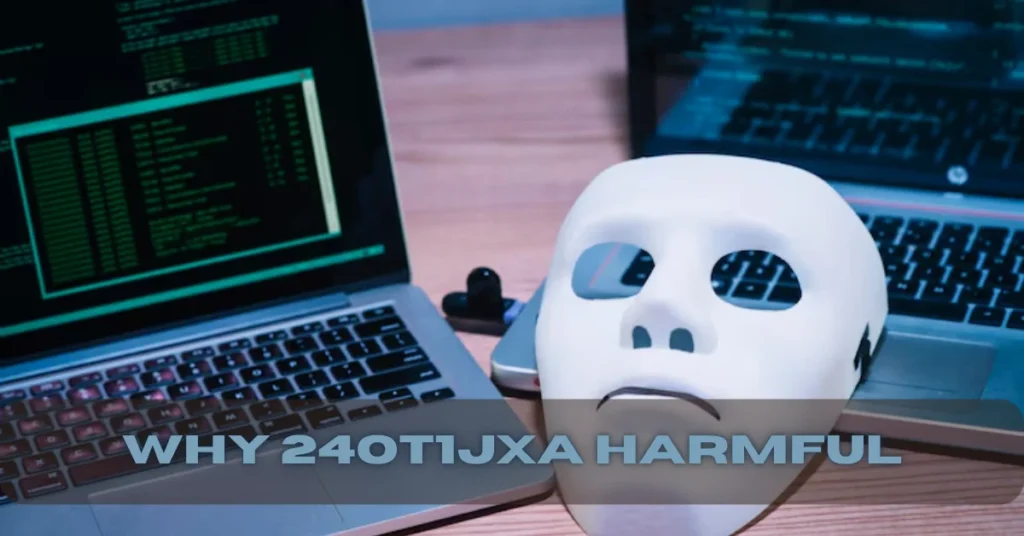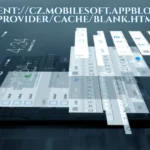Introduction
Ever heard of why 24ot1jxa harmful? Probably not. But if you’re in cybersecurity or IT, you need to know. This isn’t your run-of-the-mill malware—it’s stealthy, smart, and downright dangerous. It’s the kind of digital ghost that can haunt systems undetected, stealing data, draining resources, and creating chaos. So what makes it so effective? And why are traditional defenses almost useless against it? Let’s dive deep.
Understanding 24ot1jxa
Origins of 24ot1jxa
24ot1jxa isn’t just another shady script found on a dark web forum. It appears to be a highly sophisticated piece of code, possibly state-sponsored or created by a well-funded cybercriminal group. What’s more frightening? It’s built to evolve—like malware with a brain.
How 24ot1jxa Behaves
This malware doesn’t blast its presence with pop-ups or system crashes. Instead, it quietly infiltrates, often remaining dormant until triggered. It can monitor user activity, exfiltrate data, and even spread laterally across networks—all while keeping a low profile.
Key Indicators of Compromise
Think strange outbound traffic, unexplained data usage, sluggish systems, and modified registry keys. But here’s the twist—these signs are subtle, often blending in with normal behavior. That’s what makes it so hard to detect.
The Harmful Nature of 24ot1jxa
Data Exfiltration and Privacy Threats
24ot1jxa isn’t just snooping—it’s stealing. Personal files, login credentials, financial records—you name it. Once this data is out, it could end up in hacker forums, dark web markets, or used in further attacks.
Resource Consumption and System Slowdowns
This malware doesn’t always destroy—it drains. Expect performance dips, random slowdowns, and bandwidth hogging. Like a parasite, it feeds off system resources without killing the host.
Real-World Incidents Involving 24ot1jxa
Some tech firms have reported advanced intrusions where the root cause was traced back to 24ot1jxa or its variants. These breaches led to data loss, reputational damage, and millions in recovery costs.
How 24ot1jxa Evades Traditional Security
Polymorphic Code and Obfuscation
24ot1jxa can rewrite parts of itself every time it runs. This makes signature-based detection—used by most antivirus tools—basically worthless.
Fileless Execution Tactics
Why write to disk when you can run in memory? 24ot1jxa often lives entirely in RAM, making it invisible to file scanners and harder to trace after reboot.
Bypassing Antivirus and EDR Software
It mimics normal system processes and manipulates legitimate tools like PowerShell to hide its tracks. Even advanced Endpoint Detection and Response systems can miss it.
Techniques Used by 24ot1jxa
Social Engineering Strategies
It’s not just about code—it’s psychological. Phishing emails, fake software updates, and even bogus tech support calls are used to trick users into letting 24ot1jxa in.
Exploiting Zero-Day Vulnerabilities
Got unpatched software? You’re a sitting duck. 24ot1jxa is known to exploit zero-day flaws before they’re even public knowledge.
Leveraging Compromised Third-Party Software
Sometimes, the backdoor comes gift-wrapped in trusted tools. Hackers inject 24ot1jxa into software updates or plugins that users already trust.
Detection Challenges
Why Signature-Based Tools Fail
If you’re relying on yesterday’s definitions to catch today’s malware, you’re already too late. 24ot1jxa constantly changes, making static detection nearly impossible.
Behavioral Analysis and Its Limits
Even systems that watch for suspicious activity struggle with 24ot1jxa. Why? Because it behaves just enough like normal software to avoid raising alarms.
AI vs 24ot1jxa: Who Wins?
AI-based security tools are promising—but not perfect. 24ot1jxa uses AI too, adapting faster than many defenses can learn.
Prevention and Mitigation
Modern Endpoint Protection
Look for tools that go beyond signatures. Behavioral analytics, heuristic scanning, and real-time threat hunting are essential.
Network Segmentation and Monitoring
Don’t let one breach open the whole kingdom. By isolating systems and constantly monitoring traffic, you reduce the impact of an intrusion.
Employee Awareness and Training
Your people are your first line of defense. Teach them how to spot phishing, question weird requests, and report anything unusual.
The Role of Threat Intelligence
Sharing Information Across Industries
Threat actors share intel—why shouldn’t defenders? Collaborating across sectors can help spot patterns and prevent widespread attacks.
Using Threat Feeds to Anticipate Attacks
Live threat feeds can alert you to new malware signatures and attack methods. Staying current is half the battle.
Legal and Compliance Concerns
GDPR, HIPAA, and Data Protection Laws
Failing to protect data can lead to massive fines under regulations like GDPR and HIPAA. And yes, 24ot1jxa counts as a failure.
How Ignoring 24ot1jxa Leads to Penalties
Besides financial hits, there’s reputational damage. Losing client trust can be even more costly than regulatory fines.
Future of Malware Like 24ot1jxa
Trends in Evasion Techniques
Expect malware to become more autonomous, using AI to change tactics in real-time. Static defenses won’t cut it anymore.
The Cat-and-Mouse Game with Cybersecurity
As defenses evolve, so do threats. It’s a relentless back-and-forth. Staying ahead requires constant vigilance and innovation.
How Enterprises Can Stay Ahead
Building a Proactive Security Posture
Don’t just wait for an attack. Simulate breaches, audit your systems, and always assume your perimeter has
ChatGPT said:
been breached.
Investing in Zero-Trust Architecture
Zero-trust means no one, not even insiders, gets automatic access. Every request is verified—regardless of where it comes from.
Incident Response Planning
Have a plan, test it, and be ready to execute it the moment something goes wrong. The quicker you can respond, the less damage 24ot1jxa will do.
Small Businesses Are Also at Risk
Why Small Doesn’t Mean Safe
Small businesses often think they’re too insignificant to be targeted. But cybercriminals love easy targets. Protect your data like you would your most valuable asset.
Affordable Defenses for SMEs
You don’t need to spend a fortune on security tools. A solid firewall, good password policies, and a few basic tools can make a world of difference.
Case Study: Company X vs 24ot1jxa
How They Got Hit
A global retailer was hit by why 24ot1jxa harmful after a compromised third-party app introduced the malware. Their traditional defenses failed, and it cost them dearly.
What They Learned and Changed
They switched to a zero-trust model, invested in AI-driven security tools, and now conduct regular security training. The result? A drastically reduced risk of a repeat incident.
Final Thoughts
why 24ot1jxa harmful is a clear signal that traditional security measures are no longer enough. As attackers get smarter, so must defenders. Whether you’re a large corporation or a small business, proactive and advanced security strategies are essential. Don’t wait for a breach—act now, and protect your data before it’s too late.






